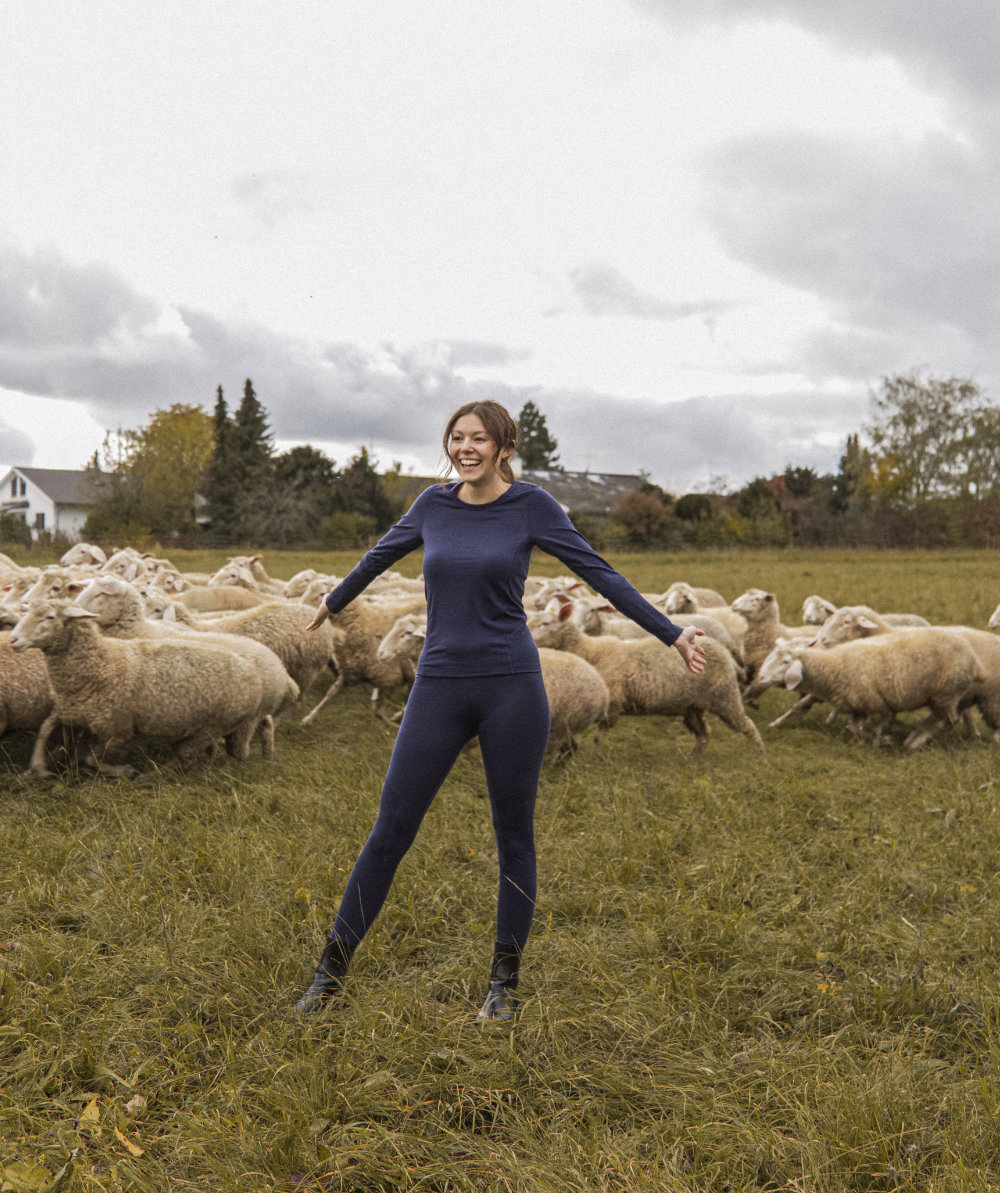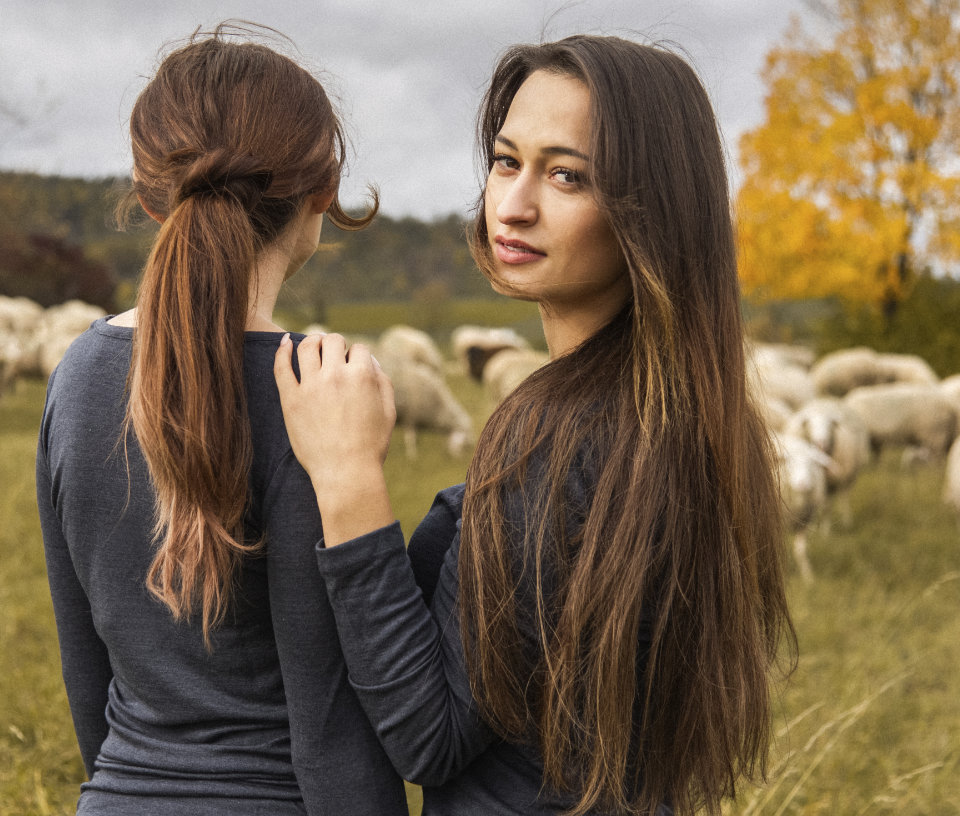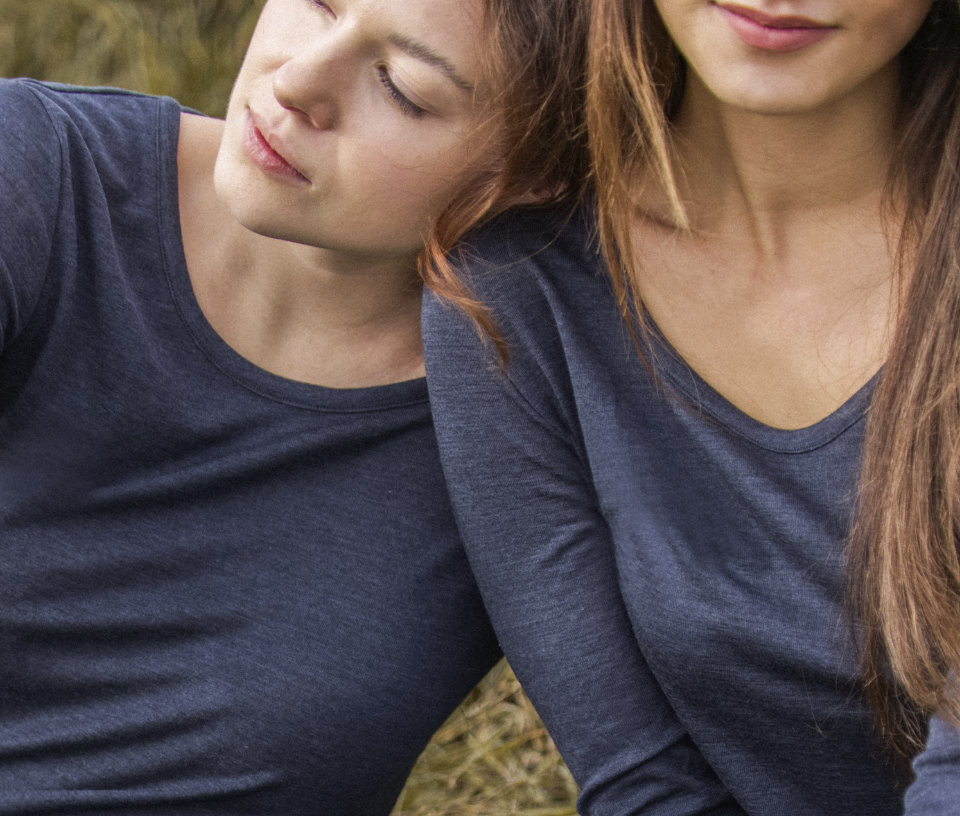
The truth about merino wool
What is the first thing that comes to mind when you hear the word ‘wool’? We immediately think of a warm, fluffy and cosy feeling on the skin. Are you wondering what makes wool so special? Find out today what it can really do, how it is produced and what the hype surrounding merino wool is all about. What's more, we're not just reporting on its good qualities, but also shedding light on its downsides, especially those of merino wool. Pay attention, it's going to be really exciting!
By Pia Erichsen
September 28, 2023
How wool becomes yarn
After shearing, the wool is sorted by colour and quality and washed. In the cleaned fleece, all the fibres are wildly distributed, so it is loosened and combed. The wool can also be dyed at this stage. In the next step, the fibres are spun into a yarn. The uniform thread is created by drawing and twisting the individual short fibres together and is wound onto a ball or into a skein.

Positive
- It warms when it is cold It
- Cools when it is warm
- It is dirt-repellent
- It is particularly lightweight with high thermal performance
- It is resistant to unpleasant odours
- It has natural UV protection
- It is breathable
- It absorbs moisture
- It is elastic
- It does not crease
- It does not become electrostatically charged
- It is flame retardant
Negative
- It can shrink easily when washed
- It can be scratchy on sensitive skin
- Pilling and fluffing may occur
- It is susceptible to moths
- It has a low tear resistance
The popular sheep's wool
Until the 19th century, wool was a precious material and was only worn by privileged and wealthy citizens. Since Europe has been able to import sheep's wool from Australia and New Zealand, it has been available in large quantities and has thus become affordable for the general population. The shorn coat of sheep is also called fleece and consists of (1) the outer layer of hair, which is stiff and coarse and protects against the weather, and (2) the inner layer of hair, which is soft and fine and regulates body temperature. As a rule, sheep's wool is obtained from the inner hair. The fluffy feeling is created by the scaly outer layer of the hair and its crimp, which varies greatly depending on the breed. The more uniform the fibre structure, the better the quality of the clothing. In Germany, sheep are usually shorn once a year. On average, each sheep produces 3.5kg of wool, the value of which varies according to breed and age. Due to breeding, the amount has tripled.


Why merino wool is not itchy
Merino sheep belong to the fine wool breed. Their hair is particularly fine, soft and very curly. The fibres of merino wool are only half as thick as conventional wool fibres and only a quarter as thick as human hair. The finer the wool fibres, the more they curl when they touch your skin. Merino fibres curl with up to 40 changes of direction per centimetre. As a result, the skin is significantly less irritated and there is no unpleasant itching. We perceive a fibre with a thickness of 25 micrometres or more as itchy. The Merion fibre is between 16.5 and 24 micrometres. Ordinary sheep's wool is much coarser and twice as thick; human hair has a diameter of around 30 to 80 micrometres.
Worauf Ihr beim Kauf von Merinowolle achten solltet
Auf den ersten Blick scheint Merinowolle nur Vorteile mit sich zu bringen, doch ist das wirklich so? Bei all den tollen Eigenschaften gerät eine wichtige Frage schnell in den Hintergrund: Woher genau stammt die Wunderwolle?
Könnt Ihr mit dem Begriff "Mulesing" etwas anfangen? Falls nicht, müsst Ihr unbedingt weiterlesen! Wir bringen Licht ins Dunkle.
Das große Problem "Mulesing"
Was viele nicht wissen ist, dass die Herstellung von Merinowolle oftmals mit großem Leid für die Tiere verbunden. Damit möglichst viel Wolle gewonnen wird, werden die Merinoschafe auf viele Hautfalten gezüchtet. Dadurch sind die Schafe besonders anfällig für den Befall von Fliegenmaden. Die Fliegen legen ihre Eier in die Hautfalten in der After- und Genitalregion ab, denn dort ist es warm, feucht, schmutzig und schlecht belüftet. Die geschlüpften Fliegenmaden fressen sich in das Gewebe der Schafe und dadurch kommt es zu schweren Entzündungen und oftmals zum Tod der Schafe. Um dies zu verhindern werden den Lämmern die Hautfalten um After, Vulva und Schwanz ohne Betäubung herausgeschnitten. Die Narben werden nicht weiter behandelt und müssen von alleine heilen. Auf dem Narbengewebe wächst keine Wolle mehr und die Fläche bleibt faltenfrei, so dass die Fliegen keine Maden legen können.
Mulesingfreie Produktion
Wir bei Comazo verurteilen so ein Verfahren auf das Schärfste und setzen deshalb auf 100% mulesingfreie Produkte.
Darauf solltet Ihr beim Kauf von Merinowolle achten
- Fragt, ob die Wolle in Australien produziert und das "Museling"-Verfahren eingesetzt wurde
- Gibt es keine Auskunft über das Herstellungsverfahren, kauft keine Merinowolle
- Verlangt Transparenz von allen Unternehmen, die Produkte aus Merinowolle anbieten und bisher keine Auskunft geben
- Unterschreibt Protestbriefe und unterstützt Kampagnen gegen dieses Verfahren, damit auch Australien ein Verbot ausspricht
Wenn Ihr auf der Suche nach hochwertiger, tierfreundlicher und nachhaltiger Kleidung seid, dann entdeckt jetzt unsere mulesingfreie Merinowolle-Kollektion.










